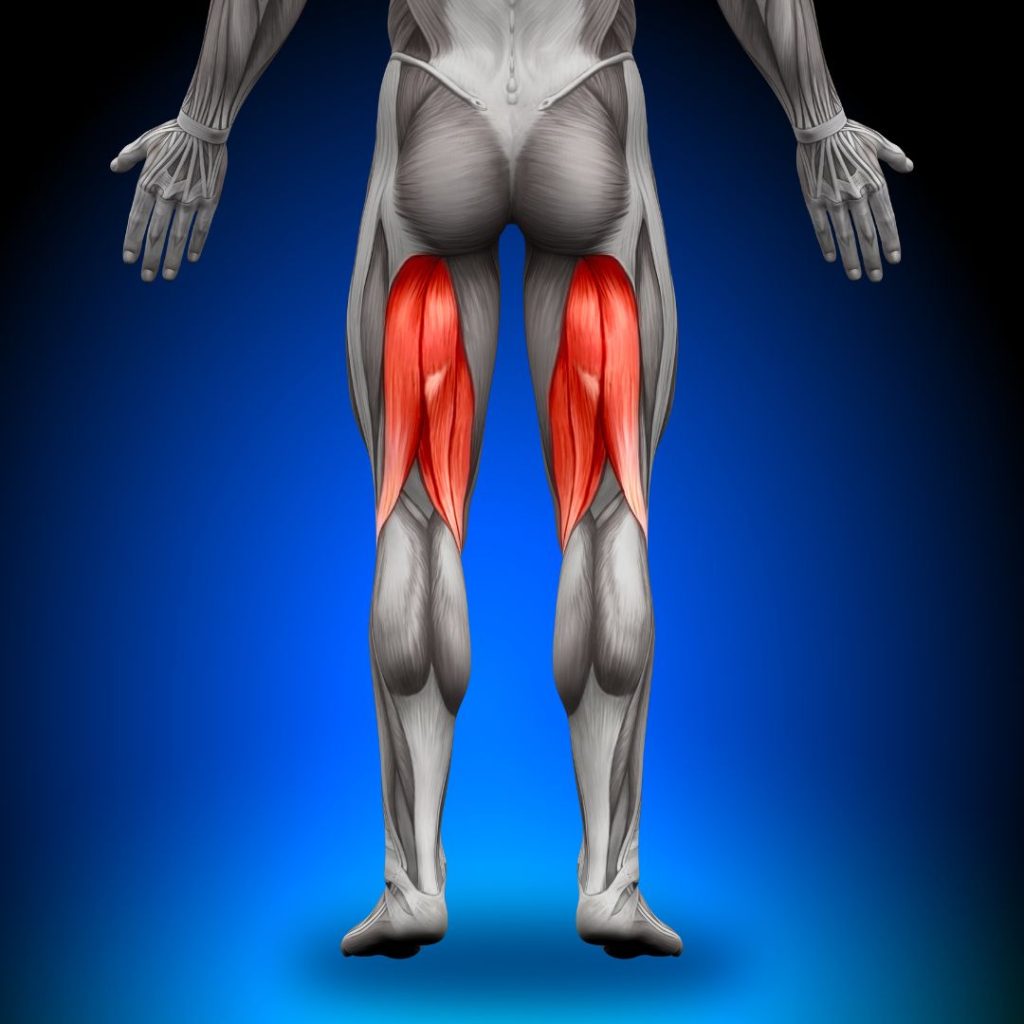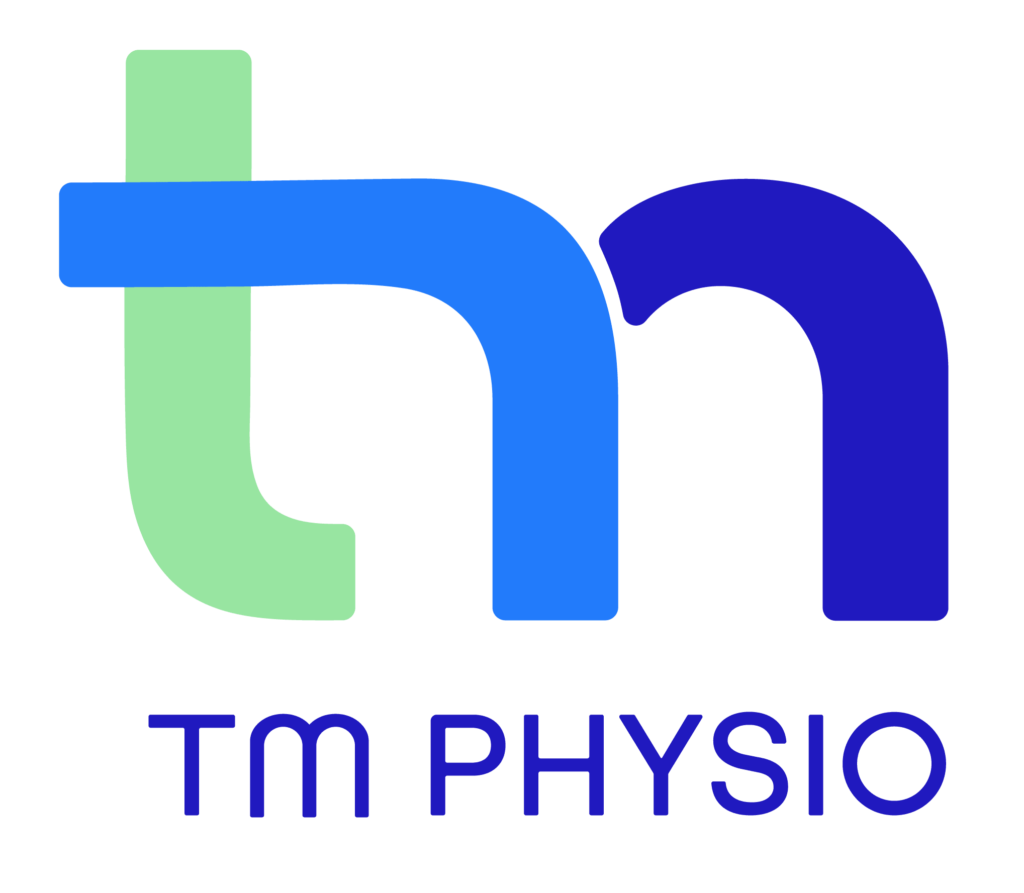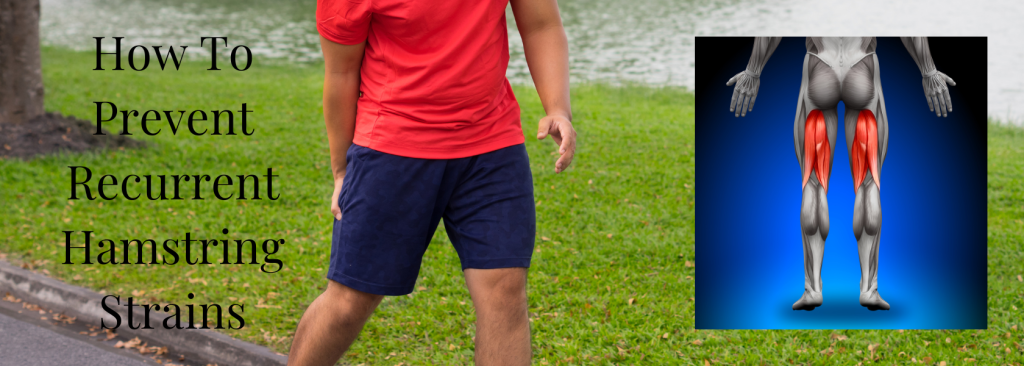So, you strained your hamstring. It was painful. It’s been a few days and the major pain has subsided. Now that it’s feeling better, you feel eager to get back to all the things you need and want to do – jobs around the house, running around with children and pets, playing sports… And we want that for you too. But we need to make sure you are fully healed and rehabilitated before you go diving back into the deep end. Straining a hamstring muscle and failing to follow through on your rehab greatly increases the risk of another hamstring strain in the future. Let’s not go there! Read on to find out more…
The Anatomy

Let’s start by understanding what’s going on in your leg.
The hamstrings comprise of three muscles located in the back of the thigh. They are the semimembranosus, semitendinosus, and biceps femoris. The hamstrings originate from the ischial tuberosity (the sitting bone) and are attached to the tibia and fibula (the lower leg bones) by tendons.
The hamstrings are responsible for bending the knee and extending the hip so they’re active in running, walking, climbing stairs, cycling, tilting the pelvis and are even involved in moving your foot from the accelerator to the break while driving – an injury can be very inconvenient indeed.
Damage can be to the muscle itself or to the tendons. In fact, the junction where the muscle fibres transition into tendon is a particularly vulnerable point. The unique arrangement of the hamstring muscles, with long muscle fibres crossing two joints (the hip and knee), makes them susceptible to injury, especially when performing activities like running or kicking, which involve both joints.
When you consider, on top of the unique anatomy of the hamstrings, that scar tissue is both weaker and less flexible than healthy, uninjured tissue it starts to make sense that this part of the body is particularly susceptible to recurrent injury. (Although it still feels very unfair!)
What To Do About It
Firstly, we hope you sought treatment for the original injury. If you did your physiotherapist will have ensured it healed as well as possible. If not, don’t despair – we can still help. Call to make an appointment on 6254 9889.
Next, we need to work on strengthening the muscles and tendons. The best exercises for you will depend on the exact location and severity of the original and recurrent strains you’ve suffered, but evidence suggests you’ll be performing progressive bridges, squats and leg curls on your journey to recovery. Don’t forget we’ll need to address any core stability issues you have too!
Placing appropriate load on the muscle and tendon will help it to heal since exercise brings healing blood-flow to the area, stimulates the production of new muscle fibres and reduces the amount of scar tissue that forms. Improved strength and flexibility (in balance) also gives you stability in your movement, making future injuries less likely.
So, if you’ve suffered a hamstring injury in the past, please take care of yourself to make recurrent injuries less likely. And remember the physiotherapists at TM Physio are always here to help. Call us on 6254 9889 if you have any concerns or would like further advice on preventing re-injury. You might also like to follow us on social media for more helpful (and we like to think fascinating) tips and tricks for better health and better movement. We’re on Facebook and Instagram.


